Occasionally, gazing at the stars during a cloudless and pitch-black evening, one may observe a broad luminous trail in the heavens, bearing a resemblance to a river or a pathway. This celestial entity is known as the Milky Way, the home of planet Earth. Its vastness is nearly unfathomable, with a diameter spanning approximately 100-115 thousand light years. What mysteries lie within our galaxy?
1. The structure of the Milky Way is akin to a distorted disk
Approximately two-thirds of the galaxies known to astronomers have a disk-shaped structure. This fact is well-documented by numerous photographs available on various space and astronomy websites. However, it is not widely known that our own galaxy does not conform to this ideal shape; instead, it resembles a slightly crumpled pancake with a thickening in the center. These irregularities are believed to be caused by the gravitational influence of nearby star clusters.
Moreover, even with the aid of telescopes, human beings are only able to observe a mere 10% of the matter present in the universe. Astronomers hypothesize that the stars, planets, asteroids, and dust that are visible to us constitute just one-tenth of the total mass of the Milky Way. The remaining 90% is composed of what is known as dark matter, a substance whose existence has been confirmed by scientists through the creation of a comprehensive model of our galaxy.
3. The Milky Way contains around 200 billion stars, making it one of the most star-populated galaxies in the cosmos.
Compared to other galaxies, the Milky Way has an average number of stars. Some clusters can have a volume ranging from one to several trillion stars.
4. Approximately 10% of the visible space is occupied by gas and dust particles.
This cosmic debris can make up to 15% of all visible matter. The presence of dust and gas poses challenges for studying the vastness of the galaxy and the universe.
5. The Milky Way has a gravitational pull that attracts stars from other systems.
Due to its immense mass, our galaxy frequently pulls stars from smaller clusters. This phenomenon occurs when another system comes within close proximity to the Milky Way.
6. The Milky Way is nearly as old as the Universe itself.
According to scientists, it is estimated that the age of our Universe is just under 14 billion years. At the same time, the Milky Way is believed to have an age of 13.5-13.6 billion years.
7. A massive black hole resides at the center of our galaxy.
At the center of the Milky Way lies an incredibly massive object. It is thought to be a black hole, a celestial body with an astonishing density. In fact, its size is 33 times larger than that of the Sun, and its mass is 4 million times greater than that of our own star.
8. The Milky Way is in motion through space.
In the known portion of the Universe, there are no objects that remain completely still. The Earth rotates on its axis and orbits around the Sun; the solar system revolves around the center of the Milky Way, which, in turn, along with several other galaxies, is moving at a velocity of approximately 600 km/s relative to the cosmic microwave background radiation.
9. There exist numerous planets resembling Earth within the Milky Way galaxy
Based on astronomical research, it has been estimated that there are approximately 40 billion planets within our galaxy. Consequently, it cannot be dismissed that a significant proportion of these planets may possess conditions similar to those found on Earth. This implies that the likelihood of life originating on some of these planets is feasible.
10. The galaxy experiences a continuous cycle of star formation and destruction
An estimated 5-7 new stars are formed in the Milky Way annually. Additionally, once every two centuries, a remarkable and awe-inspiring event occurs within the galaxy – a supernova explosion.
Did you find the article interesting? Make sure to visit our website dedicated to science, education, and personal growth, as well as our VK group! There, you will find a plethora of intriguing content!
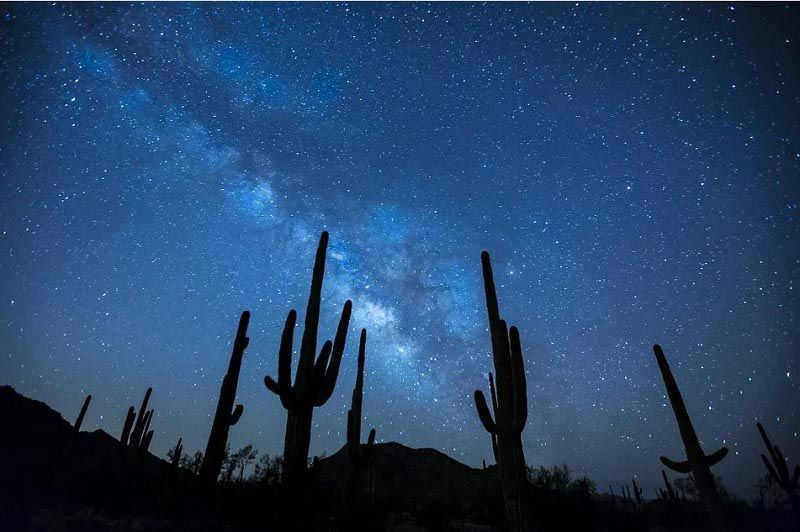
This is the view of the Milky Way galaxy as seen from Earth’s surface
- The Milky Way galaxy contains an estimated 200 to 400 million stars, depending on different sources. While this may seem like a large number, there are galaxies that are tens and even hundreds of times larger.
- From the perspective of an observer on Earth, the center of the Milky Way can be found in the constellation Sagittarius.
- All the stars in the Milky Way orbit around a supermassive black hole located at its center, similar to how the planets in our solar system orbit around the Sun.
- It takes the Sun approximately 220-240 million years to complete one revolution around the galactic center.
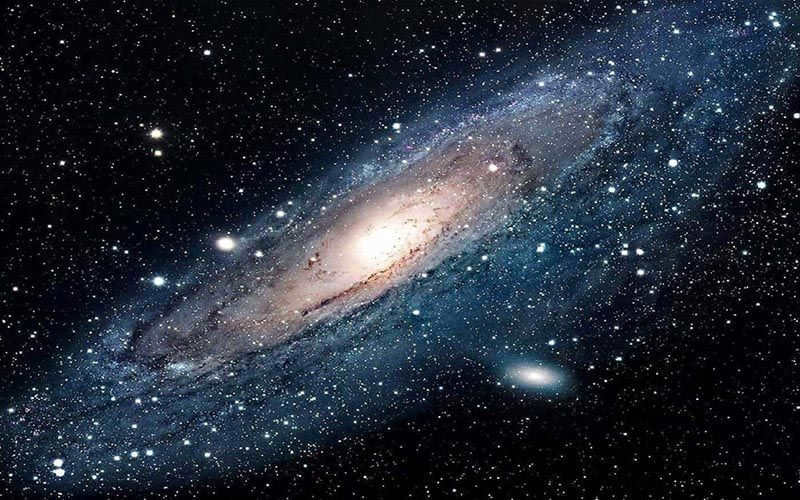
- Our galaxy is accompanied by smaller galaxies known as satellites. The most renowned ones are the Large and Small Magellanic Clouds, which were named after the famous explorer Fernan Magellan.
- In approximately 4 billion years, the Milky Way will engulf both Magellanic clouds, assimilating their stars into itself.
- Together, the Milky Way, Andromeda, Triangle, and around forty-eight smaller satellite galaxies form the gravitationally interconnected Local Group of galaxies.
- The galactic disk’s shape is actually quite different from the ideal. The disk of the Milky Way is visibly curved, most likely due to the gravitational influence of Andromeda.
- In approximately 5 billion years, the Milky Way and the Andromeda galaxy will undergo a collision. There are two potential outcomes for this cosmic event – either Andromeda will engulf the Milky Way, or the two galaxies will pass through each other and then separate. The magnitude of stars within these galaxies is such that either outcome is entirely plausible.
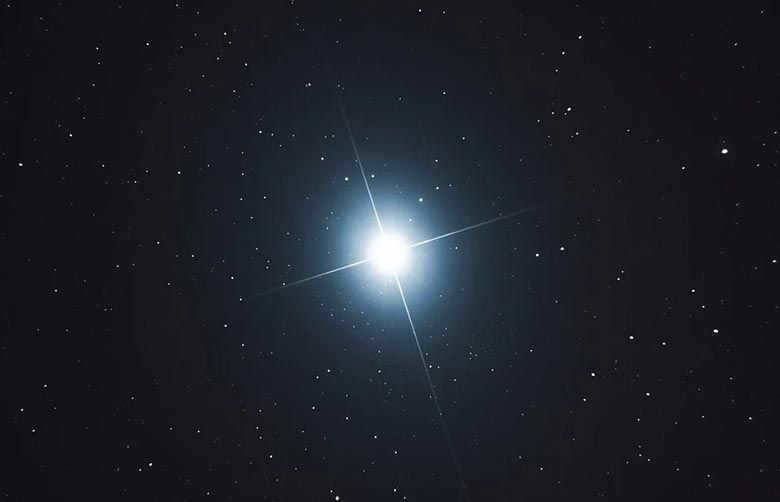
Discover 20 fascinating details about Sirius
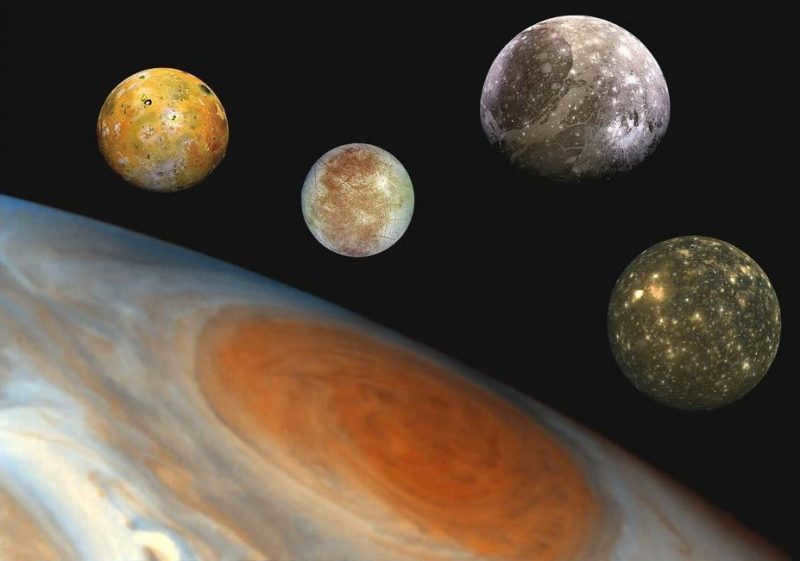
20 fascinating facts about Jupiter’s moons
- Just like star systems, galaxies have their own habitable zone. Fortunately for us, the Sun is located in the habitable zone of the Milky Way.
- The bulge, which is the central thickening on the galactic disk, has a diameter of approximately 3000 light years.
- Attempting to capture a photograph of our galaxy from Earth is akin to trying to take a picture of your own house without stepping outside.
- The galactic disk of the Milky Way is approximately 1000 light years thick.
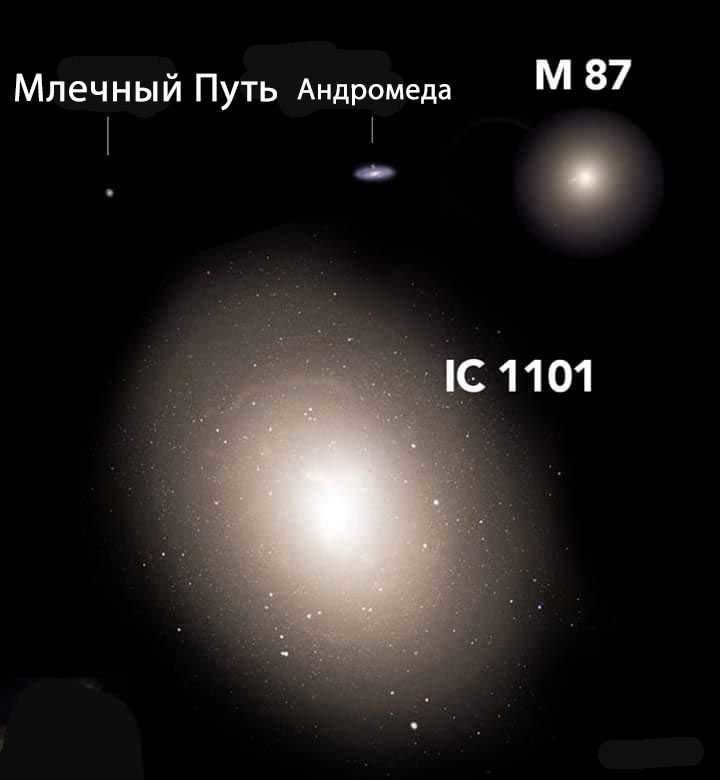
Examining the dimensions of the Milky Way in relation to other galactic celestial bodies
Every single star that is visible to the naked eye at night belongs to the Milky Way. However, if you happen to spot a hazy object above you during the winter months, you are actually gazing at a cluster of stars that lies outside of our galaxy, and it happens to be larger than the Milky Way itself. This magnificent cluster is known as the Andromeda Galaxy.
Without the aid of a telescope, it is impossible to discern individual stars within this cluster – they simply appear as a blurry mass. What adds a touch of anxiety to this already fascinating discovery is the fact that scientific projections indicate that our very own Milky Way will eventually collide with the Andromeda Galaxy in approximately 4.5 billion years.
So instead of dwelling on the sadness that may accompany the thought of this distant future event, AllKnowing.ru cordially invites you to explore 25 astonishingly remarkable facts about the Milky Way right now.
1. The Milky Way is as ancient as the cosmos
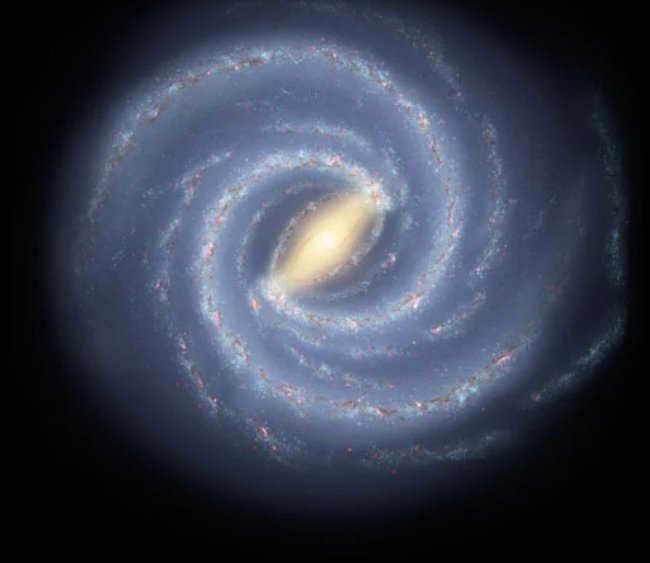
According to scientists, the Milky Way is considered to be one of the most ancient galaxies in the entire universe. It came into existence approximately 13.6 billion years ago, making it almost as old as the universe itself, which was formed around 13.7 billion years ago.

In Greek mythology, the formation of the Milky Way occurred when Hera accidentally spilled her milk while breastfeeding Hercules. It is believed to be the result of her divine act. Additionally, the Milky Way was symbolically depicted as the pathway leading to Mount Olympus, the abode of the gods, or as the trail left by the majestic chariot of Helios, the sun god.
3- The Milky Way is composed of various galaxies
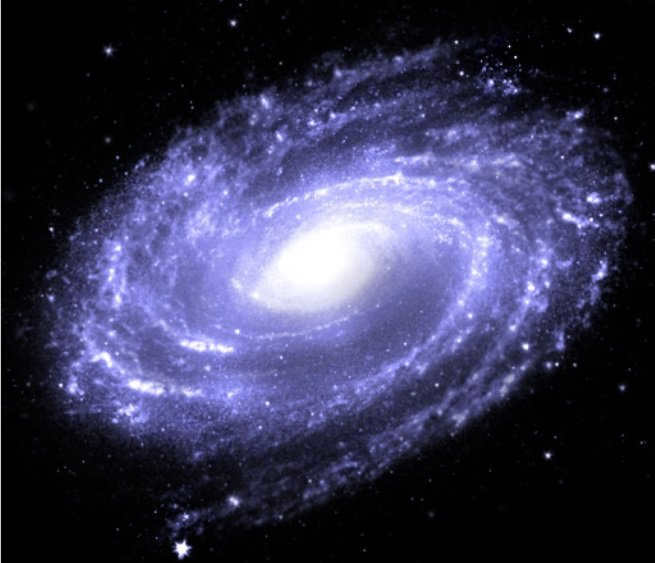
The Milky Way has grown to its present size and shape by assimilating other galaxies over time. At present, our galaxy is in the process of assimilating a dwarf galaxy in Canis Major, incorporating stars from the smaller galaxy into its own spiral structure.
4. Unbelievable velocities
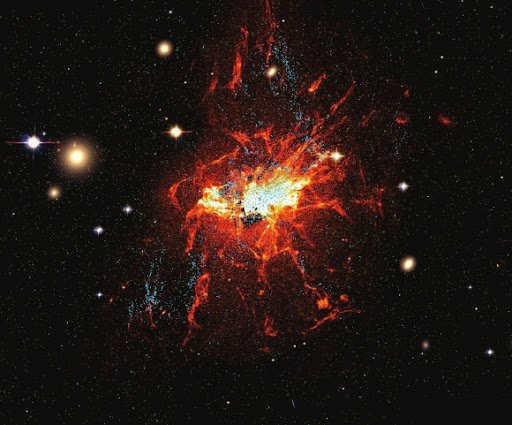
At a speed of approximately 827,000 km/h, our solar system is constantly revolving around the central point of the galaxy. To put this in perspective, an object moving at this velocity could complete a full lap around the Earth’s equator in under three minutes.
5. It possesses an abundance of dust and gas
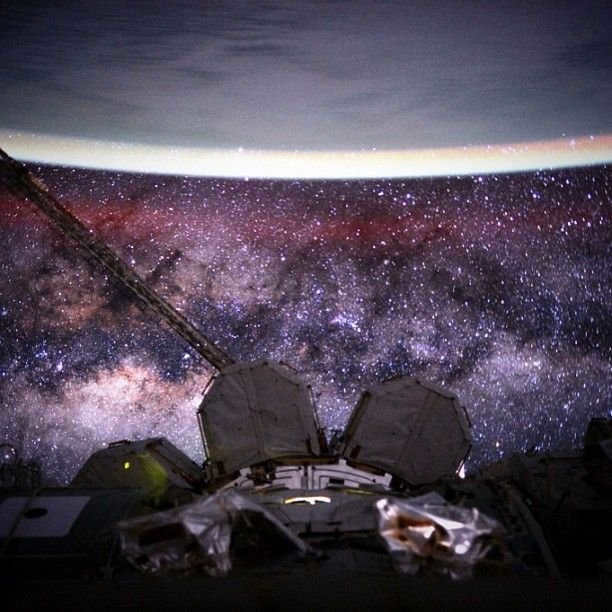
While it may not be apparent to the casual observer, the Milky Way is teeming with particles of dust and gas. These particles account for a staggering 10-15% of all the visible matter in our galaxy, with the remainder being comprised of stars.
Spanning approximately 100,000 light years in diameter, our galaxy’s visible spectrum only encompasses about 6000 light years. However, under favorable conditions with minimal light pollution, the dusty band of the Milky Way can still be observed in the night sky.
6. A vague amount of stars
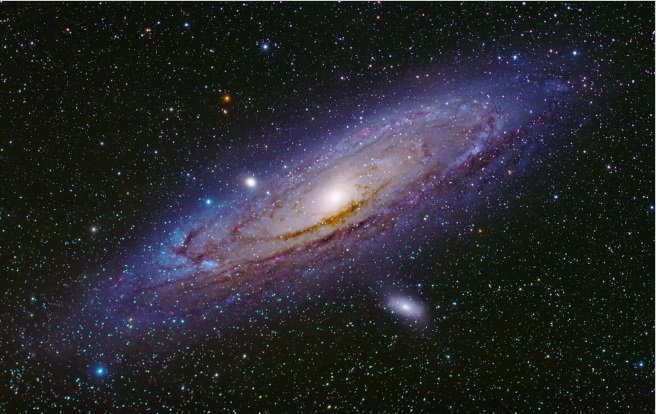
Ever wondered how many stars exist in the Milky Way? This question has even sparked debates among astronomers, as determining an accurate count is no easy task. Telescopes can only detect the brightest stars in our galaxy, and many are obscured by clouds of gas and dust.
Current estimates suggest that the Milky Way is home to between 200 and 400 billion stars, with the majority forming a flat disk shape.
In addition to stars, the Milky Way also houses an estimated 25 to 100 billion brown dwarfs.
However, there is a certainty that there are billions of invisible stars lurking within the galaxy. This means that when we gaze at the Milky Way on a clear night, we are only seeing a tiny fraction – approximately 0.0000025% – of the hundreds of billions of stars that exist within this vast galaxy.
7. Red dwarfs are the most prevalent stars in our Milky Way galaxy
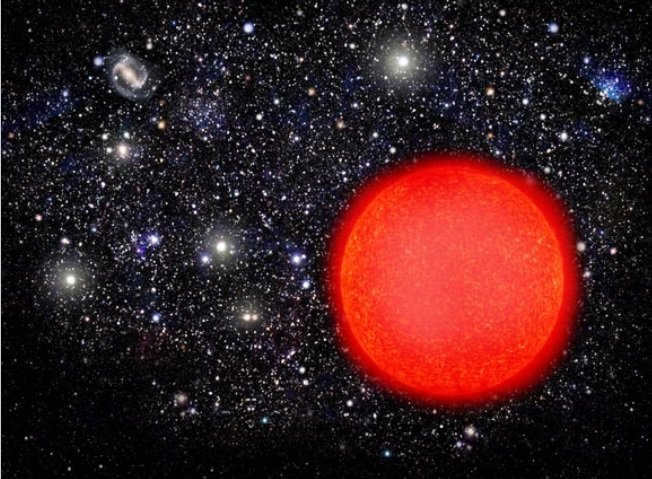
The predominant stars in our galaxy are known as red dwarfs. So, what exactly is a red dwarf? Well, it’s a type of star that is relatively cold and has a mass that is about one-tenth of the Sun’s mass. In the past, it was commonly believed that these stars were incapable of supporting life. However, current scientific understanding suggests that it may be possible for life to exist on red dwarfs.
8. The creation of supernovae
Frequently, the Milky Way relinquishes stars to the phenomenon known as supernovae. What precisely do astronomers refer to as supernovae? It is the occurrence in which a star detonates at the conclusion of its existence, resulting in the near complete dissipation of its mass.
9. The diverse forms of energy within the Milky Way
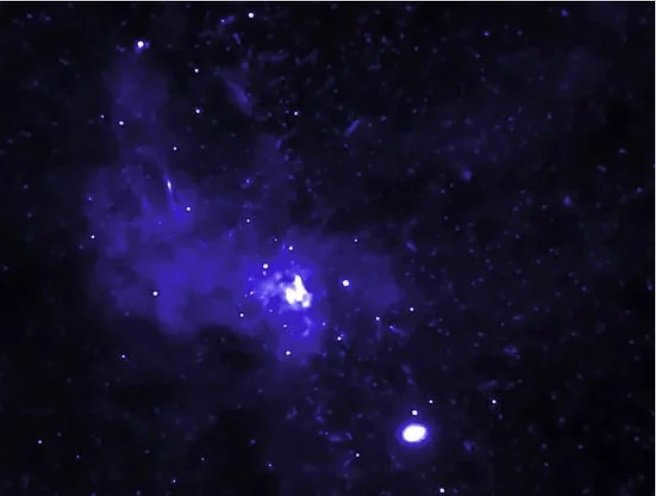
Visible light is just one type of energy that we perceive. It comes to us directly from the stars and other celestial bodies within the Milky Way galaxy. Our galaxy is also comprised of various other forms of energy, including infrared light, radio waves, gamma rays, dark matter, and X-rays.
10. Our surroundings are enveloped by a mysterious dark halo

The Milky Way possesses a dark matter halo that constitutes more than 90% of its total mass. As a result, the visible components, even when observed using telescopes, account for less than 10% of the galaxy’s mass. The remaining majority is comprised of darkness.
11. Enormous bubbles exist at the core of the Milky Way

Recent research published in Nature has discovered that there are a pair of enormous bubbles emitting radio emissions at the center of the Milky Way. These bubbles are believed to originate from a black hole and are expanding in opposite directions through space.
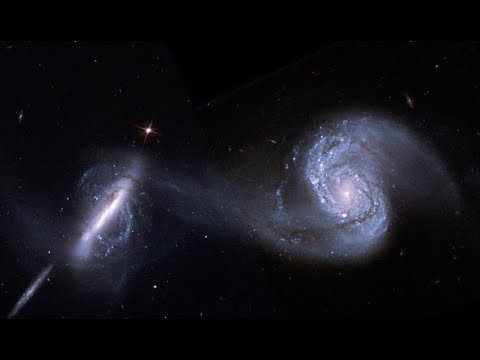
Ever since our solar system formed approximately 4.6 billion years ago, it has completed less than 20 revolutions around the galaxy along with the Sun. If that doesn’t impress you, consider this: since the existence of mankind, they have only completed 1/1250th of a revolution.
13. The Milky Way attracts and occasionally collides with smaller galaxies in its orbit

The European Southern Observatory has reported that during his voyage around the southern hemisphere in the 16th century, Portuguese explorer Ferdinand Magellan and his team were among the first Europeans to observe groups of spherical stars in the night sky.
These groups of stars are actually small galaxies that orbit around our Milky Way, similar to how planets orbit around a star. Therefore, astronomers decided to name these galaxies the Small and Large Magellanic Clouds in recognition of Ferdinand Magellan’s discoveries.
14. The Milky Way is in motion
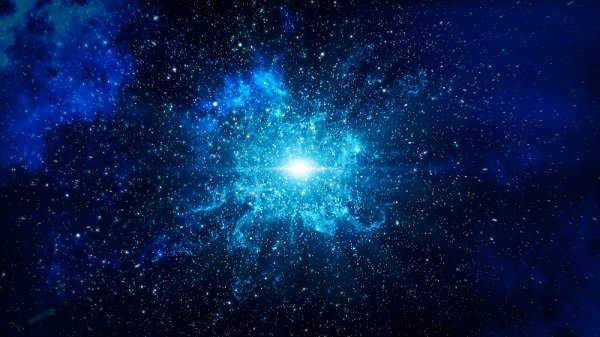
The Milky Way, similar to all other objects in the cosmos, is in constant motion. The Earth orbits around the Sun, while the Sun itself orbits around the Milky Way galaxy. Furthermore, the Milky Way is also in motion as it is a part of the Local Group, a collection of galaxies. Interestingly, the Local Group itself is moving in relation to the cosmic microwave background radiation, which is the residual radiation from the Big Bang.
15. The Milky Way is teeming with toxic fat
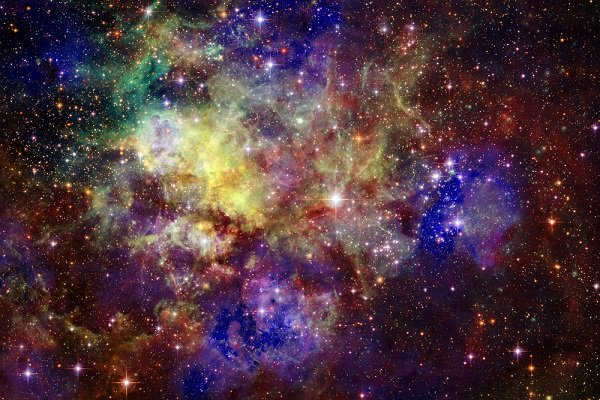

The swirling patterns that emerge within the vast expanse between stars within our galaxy consist of a conglomeration of unclean lipids. These greasy organic molecules, commonly referred to as aliphatic carbon compounds, are generated within specific categories of stars before gradually infiltrating the interstellar void.

Imagine if we were to compare the Milky Way’s diameter to the size of a Frisbee. In this scenario, its thickness would be no more than that of a single sheet of paper. It’s hard to believe, but true.
17. The Milky Way is both a spiral and crisscrossed galaxy simultaneously
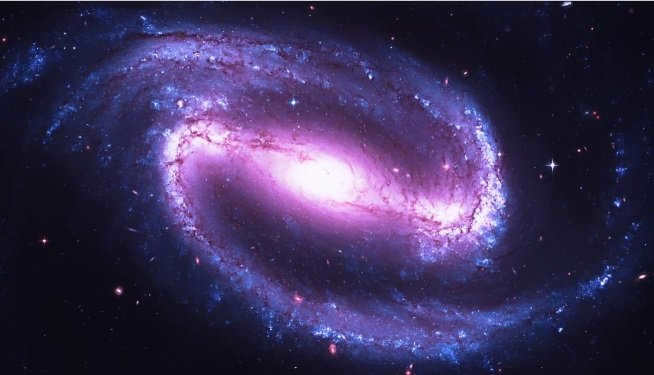
18. The weight of the Milky Way remains a mystery.
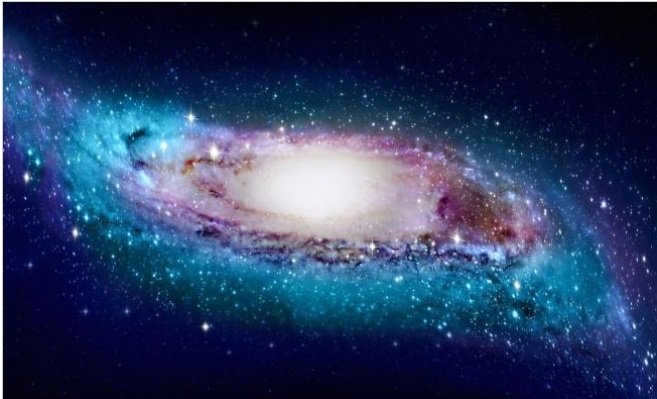
The exact weight of our galaxy, the Milky Way, remains uncertain to astronomers. At present, its mass is approximated to be somewhere between 700 billion and 2 trillion times the mass of our Sun. However, determining an accurate measurement is challenging. According to experts, the majority of the Milky Way’s mass (around 85%) is composed of dark matter, which does not emit light and, as a result, cannot be directly observed.
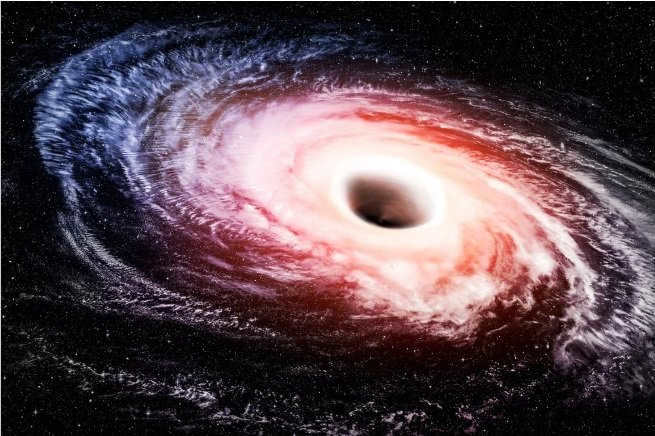
In the heart of the Milky Way lies a formidable gravitational force that scientists identify as a black hole. This black hole has been given the catchy name Sagittarius A*. Astronomers estimate that this black hole has a mass equivalent to that of 4 million suns combined. Impressive!
20. It’s a component of the Virgo Supergroup
Despite its vastness, the Milky Way is a constituent of an even more expansive galactic structure. Our closest companions consist of the Large and Small Magellanic Clouds, as well as the Andromeda Galaxy, which is the nearest spiral galaxy to our own Milky Way.
Together with approximately 50 other galaxies, the Milky Way and its immediate neighbors form a cluster known as the Local Group, which is, in turn, a part of the considerably larger Virgo Supergroup.
21. The one who first proposed that the Milky Way consists of stars was Democritus
The first person to propose that the Milky Way is composed of stars was the ancient Greek philosopher Democritus, who lived from approximately 460 to 370 B.C. In 1610, Galileo Galilei became the first individual to utilize a telescope and distinguish numerous individual stars within a band of light.
According to Chinese mythology, the gods positioned a river in the sky to protect a weaver from a shepherd who was infatuated with her. This tale embodies a grand-scale romantic tragedy.

24. It is not possible to view it from a higher vantage point
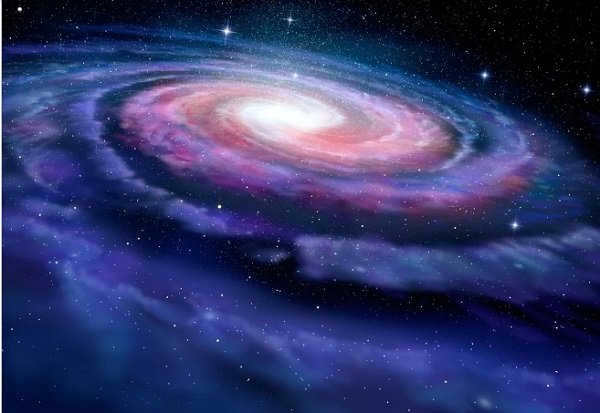
Every image of the Milky Way taken from space that you have ever come across is either a depiction by an artist or a picture of a different galaxy. Due to our position within the galaxy, we are unable to observe it from a top-down perspective!
25. The lifespan of the Milky Way is finite.
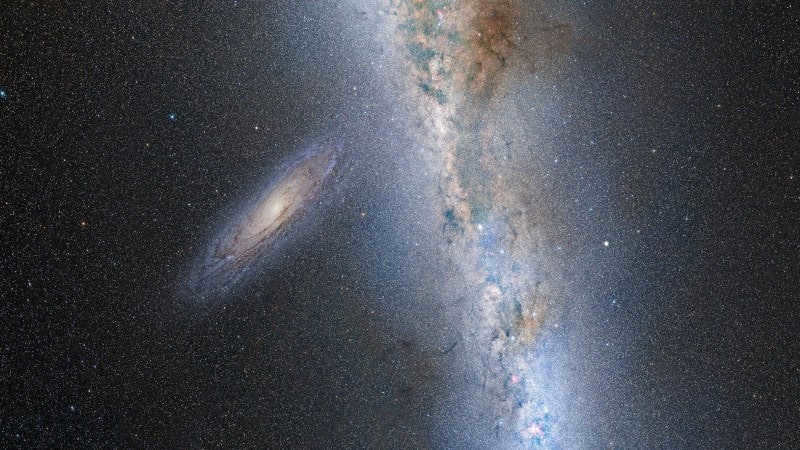

In approximately four billion years, the Milky Way and the Andromeda Nebula galaxies will collide with each other.
The two spiral galaxies are currently approaching each other at a speed of 402,336 kilometers per hour.
Despite the collision, the consequences won’t be as catastrophic as one might expect. It is highly likely that Earth will survive, and the number of stars that will perish will be relatively low. Instead, a brand new supergalaxy will emerge, completely transforming the appearance of the night sky as we know it.
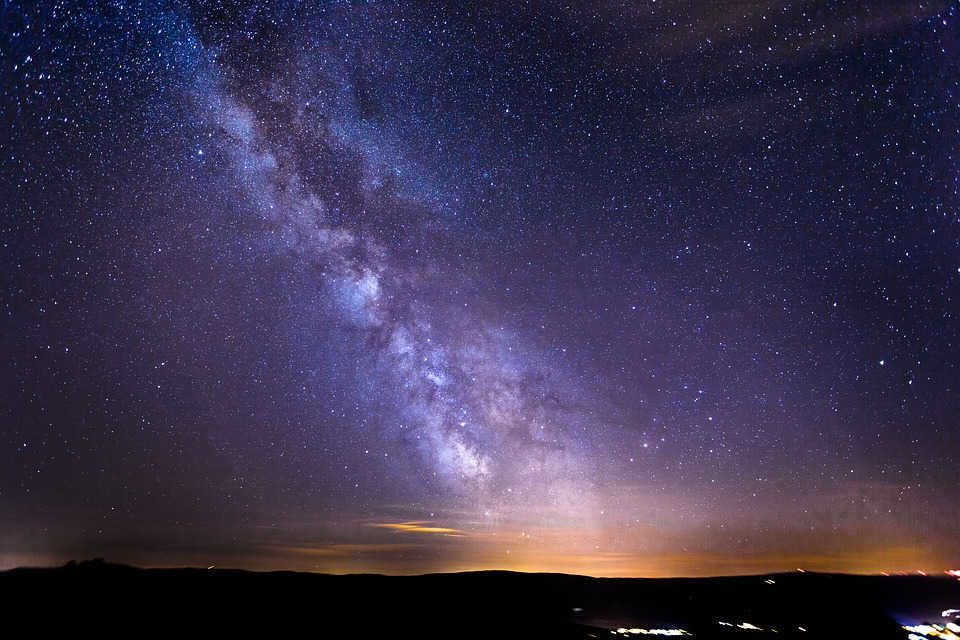
One interesting fact about the Milky Way is that it has a supermassive black hole at its center, just like most other galaxies. There are estimated to be around 200 to 400 billion stars in the Milky Way, all of which orbit the galactic nucleus similar to how planets orbit their stars. For example, our Sun takes approximately 240 million years to complete one revolution around the galactic center.
Another fascinating fact is that the Milky Way has satellite galaxies that are gravitationally bound to it. Some of these satellite galaxies include the Large and Small Magellanic Clouds. Most of these satellite galaxies are classified as dwarf galaxies.
Fact 3: Approximately 4 billion years from now, the Milky Way galaxy will consume both the Large and Small Magellanic Clouds prior to our Sun transforming into a red giant. Additionally, after another 1 billion years, our own galaxy will be engulfed by the Andromeda Galaxy.
Fact 4: If viewed from a side perspective, the Milky Way exhibits a distinctive shape resembling a remarkably flat disk with a concentration in the center. The thickness of the galactic disk itself is three times smaller than the thickness of the bulge, measuring 1,000 light years compared to 3,000 light years. However, the diameter of the galactic disk is significantly larger, spanning 100,000 light years.
Fact 6: The mass of the Milky Way remains unknown as the observed stars’ mass is too small when compared to the gravitational interactions observed between galaxies. Scientists currently believe that approximately 90% of our Galaxy’s mass is attributed to enigmatic dark matter, which is still largely unexplored.
Fact 7: The Milky Way can be considered relatively compact when compared to some massive galaxies. For instance, IC 1101, the largest known galaxy to date, contains approximately 100 trillion stars, which is 500-1000 times more than our own.
Fact 8: The Milky Way achieved its current shape through the absorption of other galaxies. The precise number of galaxies it has already absorbed remains unknown, as the understanding of galactic evolution is still limited.
Fact 9. The rotational speed of the Milky Way’s galactic disk varies at different distances from its center. There is no linear relationship – as you move further away, the rotation speed initially decreases, then increases, then decreases again, and so on. The reason behind this phenomenon remains unknown.
Fact 10: The Milky Way travels through the cosmos at an incredible velocity of approximately 2,200,000 km/h. This discovery was made by scientists who measured the displacement of visible galaxies using the Hubble Space Telescope and other advanced instruments.
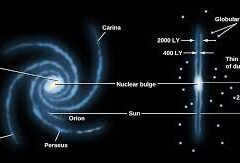
The process of examining the Milky Way would be less challenging if we were able to surpass it and observe its surroundings.
The exploration of our galaxy’s composition: a chronological account
Herschel’s Observations of the Milky Way Galaxy
In 1785, the renowned astronomer William Herschel made a groundbreaking discovery regarding the structure of our Milky Way galaxy. Utilizing a state-of-the-art telescope that he personally constructed, Herschel, alongside his sister Caroline, meticulously catalogued the stars in various regions of the night sky. Through their observations, they deduced that the majority of visible stars were concentrated within a flattened configuration, with an approximately uniform distribution in all directions surrounding this structure.
Based on these findings, Herschel hypothesized that the star system encompassing our Sun takes the form of a disk or wheel, with the Sun residing near its central region.
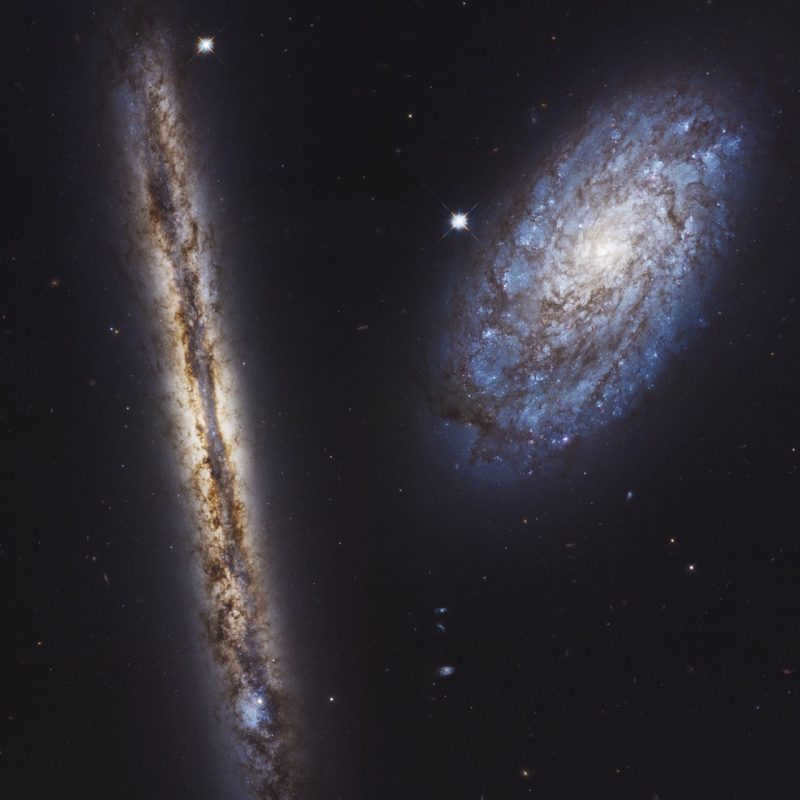
William Herschel (1738-1822) and Caroline Herschel (1750-1848): William Herschel, originally from Germany, moved to England and pursued astronomy as a hobby. He is credited with the discovery of the planet Uranus, as well as the construction of multiple advanced telescopes. His contributions also include determining the position of the Sun within the Galaxy, studying the Sun’s movement in space, and conducting comparative brightness observations of stars.
In order to comprehend the reasoning behind Herschel’s determination, envision yourself as a participant of a musical ensemble positioned at the midpoint of a football match. If you tally the number of bandmates you observe in various directions and consistently arrive at a similar figure, it is possible to infer that the group has formed a circular arrangement with yourself at the epicenter. As you are unable to perceive the individuals situated above or beneath you, it becomes evident that the circumference created by the ensemble is significantly narrower than its width.

It is now common knowledge that Herschel’s understanding of the shape of our galaxy was accurate, although his estimation of the Sun’s position within the disk was not. The Milky Way is a galaxy filled with interstellar dust, which absorbs the light emitted by stars. This led Herschel to only observe stars that are approximately 6,000 light-years away from our Sun. However, modern scientific advancements have revealed that this small portion only represents a fraction of the vast 100,000 light-year diameter disk of stars that comprises our Galaxy.
Harlow Shapley: mapping the stars
In the early 1900s, astronomers had accepted Herschel’s belief that the Sun was positioned close to the center of the Galaxy. However, it was Harlow Shapley who played a key role in uncovering the true size of the Galaxy and our precise location within it.
In 1917, Shapley conducted a study on the changing stars within the constellation Lyra. Through a comparison of the stars’ known intrinsic luminosity with their observed brightness, Shapley was able to determine their distance from us. (It is important to note that stars appear dimmer as their distance from us increases.) By knowing the distance to any star within the cluster, Shapley could then calculate the distance to the cluster itself.
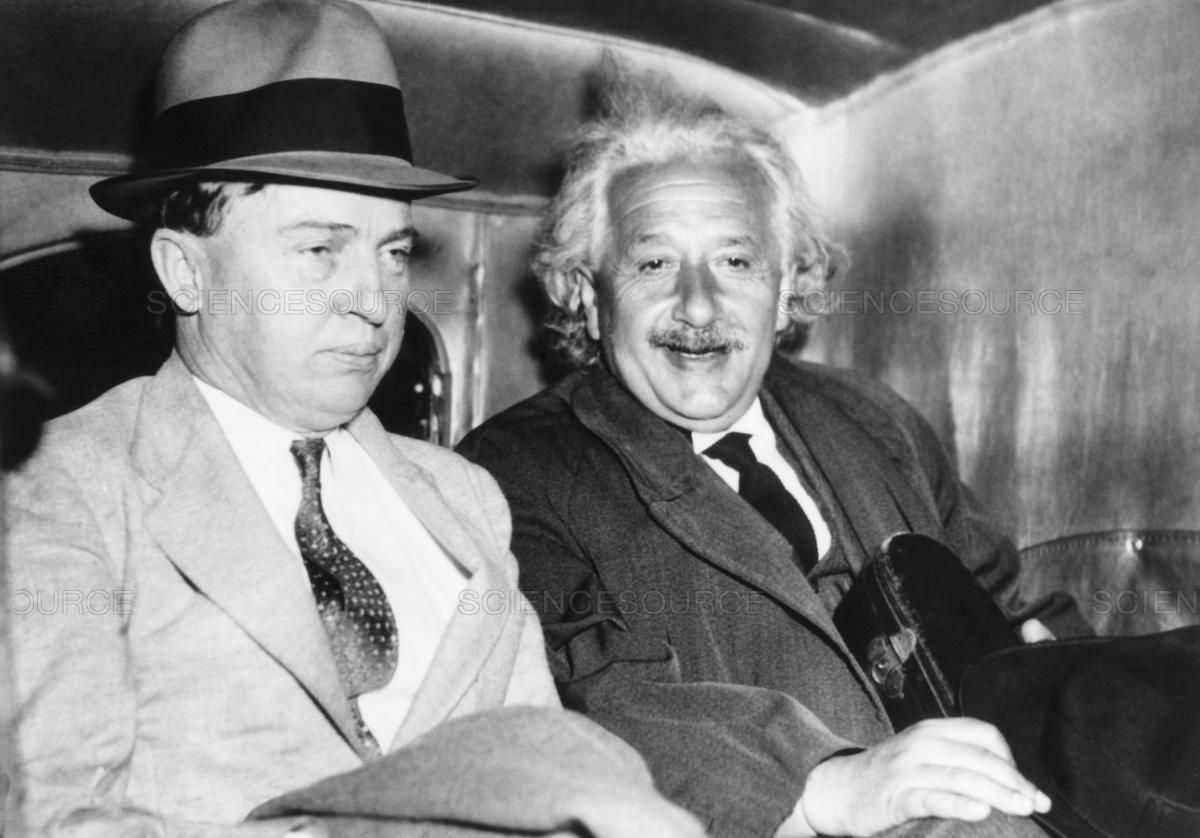
Globular clusters can be observed from great distances because they are located in areas devoid of interstellar dust. When Shapley conducted his research on 93 globular clusters, he determined their positions in space by measuring their distances and directions. His findings revealed that these clusters are distributed in a spherical volume, with the center not being the Sun, but rather a point far away in the direction of Sagittarius along the Milky Way. This led Shapley to propose a bold hypothesis, which has been supported by subsequent observations, that the center of the globular cluster system is also the center of the entire Galaxy.
Shapley’s groundbreaking work definitively demonstrated that our Sun holds no special position in the Galaxy. We exist in a rather unremarkable region of the Milky Way, alongside 200 to 400 billion other stars orbiting the distant center of our Galaxy.
Born in 1885 on a farm in Missouri, Harlow Shapley initially dropped out of high school. He received his education at home and began working as a crime reporter for a newspaper at the age of 16. However, he soon realized that without a high school diploma, his career growth would be limited. Determined to overcome this obstacle, Shapley returned to school and completed the six-year high school program in just two years.
In 1907, at the age of 22, he enrolled at the University of Missouri with the intention of studying journalism. However, he discovered that the journalism school would not be opening for another year. While browsing through the college catalog, Shapley came across the subject of “Astronomy” and remembered his childhood fascination with the stars. Intrigued, he decided to pursue astronomy during the following year.
Following his graduation, Shapley was granted a postdoctoral fellowship at Princeton University and initiated a collaboration with the exceptionally talented Henry Norris Russell. Through his doctoral dissertation, Shapley made significant advancements in techniques for analyzing the behavior of dimmed binary stars. Additionally, he convincingly demonstrated that the fluctuating cepheid stars were not binary systems, contrary to the prevailing belief at the time, but rather individual stars that pulsate with remarkable regularity.
Recognizing the impressive nature of Shapley’s work, George Ellery Hale extended an offer for him to join the staff at Mount Wilson Observatory. In this new role, Shapley capitalized on the pristine mountain atmosphere and the utilization of a 60-inch telescope to conduct his groundbreaking investigation of variable stars within globular clusters.
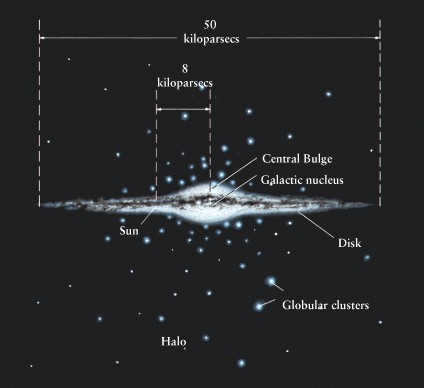
Afterwards, Shapley took on the role of director at the Harvard College Observatory, and in the following three decades, he and his team made significant contributions to various fields of astronomy. Their work included researching neighboring galaxies, discovering dwarf galaxies, conducting a survey on the distribution of galaxies in the universe, and much more.
Shapley also authored a series of accessible books and articles, earning him a reputation as one of the most influential popularizers of astronomy. He delighted in giving lectures across the country, even visiting smaller colleges where students and faculty rarely had the opportunity to interact with scientists of his caliber.
He authored the pamphlet ” Science from the Ship” regarding the individuals serving in the armed forces who endured lengthy journeys on transport vessels to Europe. Moreover, amidst the tumultuous era of the ’50s, when congressional committees commenced their “witch hunt” against proponents of communism (including progressive leaders such as Shapley), he persistently and fearlessly advocated for the preservation of intellectual freedom and the freedom of speech. Additionally, he developed a profound fascination for the behavior of ants and authored scientific papers on both ants and galaxies.
Upon his demise in 1972, Shapley was widely acknowledged as one of the prominent figures in contemporary astronomy, often regarded as the “Copernicus of the twentieth century,” for his comprehensive mapping of the structure of our Milky Way galaxy, thus illuminating our position within the Galaxy.
Disks and Halos
By utilizing advanced technology, astronomers now have the ability to explore the vast expanse of the Milky Way by studying radio and infrared emissions from distant areas of the Galaxy. Through these observations, they are able to gain a detailed understanding of the structure of our galaxy. Similar measurements and observations of other galaxies have provided valuable insights into what our own Milky Way might look like if we were able to directly observe its celestial bodies.
The most luminous section of the Milky Way is comprised of a slender, circular rotating disk that spans approximately 100,000 light-years in diameter and has a thickness of about 1,000 light-years. To better visualize its proportions, one could liken the disk to a compact disk rather than a wheel. Within this disk, not only do stars abound, but the dust and gas that serve as the building blocks for star formation are also present.
The distribution of stars, gas, and dust in the disk of the galaxy is not uniform. Instead, they are concentrated in the central band and several spiral arms. Recent observations in the infrared spectrum have provided evidence that the central band is primarily composed of old yellow-red stars.
The two primary spiral arms appear to extend from the ends of the central bar. These arms are characterized by the presence of young, hot stars emitting blue light. Many other spiral galaxies also exhibit a similar concentration of stars in their central regions, which is why they are referred to as “spiral” galaxies. The Sun is situated approximately halfway between the center of the Galaxy and the outer edge of the disk, and it is only about 70 light years above the central plane.
Our young star, gas, and dust thin disk are situated within a denser but less compact older star disk; this denser disk stretches approximately 3000 light-years above and below the midplane of the thin disk and contains only around 5% of the mass of the thin disk.
In close proximity to the center of the galaxy (around 10,000 light-years away), the stars form a central bulge.
The presence of dust obscuring a significant portion of the bulge makes it challenging to determine its shape. For a considerable period, astronomers assumed it had a spherical shape. However, evidence from infrared images and other sources indicates that the bulge is roughly twice as long as it is wide and has a peanut-like shape. The relationship between this elongated inner bulge and other stars is currently uncertain. At the very core of the bulge lies a massive concentration of matter, which we will explore further.

The mass of the Milky Way stretches out even further, reaching a distance of at least 200,000 light-years from the center of the Galaxy. This invisible mass is known as dark matter due to its lack of light emission and inability to be observed through a telescope.
The specific composition of dark matter remains a mystery, as it can only be detected through its gravitational influence on the movement of light, which is visible to us. The existence of this extensive dark matter halo is known because of its impact on the orbits of distant star clusters and other small galaxies that are connected to our Galaxy.
Astronomers have greatly benefited from the realization that our galaxy is not unique in its characteristics. Throughout the Universe, there are numerous other flat spiral collections of stars, gas, and dust.
For instance, the Andromeda galaxy, located approximately 2.3 million light-years away, bears some resemblance to the Milky Way and serves as our closest neighboring massive spiral galaxy. Gathering diagnostic data from neighboring galaxies that share similarities with our own is crucial for comprehending the characteristics of our own Milky Way.
Legends and Myths Surrounding Our Galaxy
For the majority of individuals residing in the twenty-first century, catching a glimpse of the Milky Way Galaxy is quite rare. In order to witness this spectacular sight, we must venture out of our well-illuminated homes and streets and journey to less populated areas. It is only when light pollution diminishes to insignificant levels that the Milky Way becomes easily visible on clear nights without the presence of a moon.
The Milky Way is particularly luminous during the late summer and early fall months in the Northern Hemisphere. The most ideal locations for observing the Milky Way are found within our national and state parks, where there is minimal residential and industrial development.
Before the emergence of electricity or even gas-powered lighting, individuals relied on short-lived campfires to illuminate their homes and streets. As a result, their nighttime skies were substantially darker. Confronted with countless constellations and awe-inspiring streaks of diffuse light from the Milky Way, individuals from all civilizations devised legends to comprehend it all.
Ancient tales regarding the Milky Way are preserved by indigenous Australian people through rock art and oral traditions. This heritage is believed to stretch back tens of thousands of years when Aboriginal individuals “dreamed” of the cosmos. The Milky Way held a central role as the ruler of the Universe. Taking the form of a massive serpent, the galaxy intertwined with the Earth’s serpent and thus gave rise to all creatures on Earth.
The Chinese people perceived the Milky Way as a celestial river known as the “silver river” which symbolized the division between two lovers. Positioned to the east of the Milky Way is Zhi Nu, a skilled weaver represented by the brilliant star Vega in the constellation Lyra. On the other side of the Milky Way, to the west, is her beloved Niu Lang, a shepherd associated with the star Altair in the constellation Eagle.
However, their love was thwarted by Ji Nu’s mother, the Queen of Heaven, upon discovering their clandestine marriage and the birth of their two children. Nevertheless, they are granted a chance to reunite once a year. This occurs on the seventh day of the seventh lunar month, typically in August, when they meet on the bridge spanning the Milky Way, which extends for one thousand forty.
The Quechua Indians of Andean Peru believed that the Milky Way was the home of various cosmic beings. They associated the dark spots along the Milky Way with animals such as partridges, llamas, frogs, snakes, and foxes. Interestingly, the Quechua focused on these dark regions rather than the shining band of starlight, setting them apart from other myth makers.
In contrast, the Finns, Estonians, and other Northern European cultures viewed the Milky Way as the “path of the birds” in the night sky. They made this connection based on the seasonal migration of birds along a north-south route, which they believed aligned with the Milky Way. Recent scientific research has confirmed that birds in this region actually use the Milky Way as a guide during their annual migrations.
Today, we observe the Milky Way as our home galaxy, where the life cycles of stars unfold on a magnificent scale, and where planets revolve around their respective stars.
SUMMARY: The structure of the Milky Way galaxy.
The Milky Way Galaxy is comprised of a slender disk containing dust, gas, and both young and elderly stars; a spherical halo that houses populations of extremely old stars, including pulsating stars and globular star clusters; a broader, more diffuse disk of stars; a bulge in the shape of a peanut, consisting of elderly stars surrounding the core; and a supermassive black hole located at the core. The sun is situated approximately 26,000 light-years away from the core.
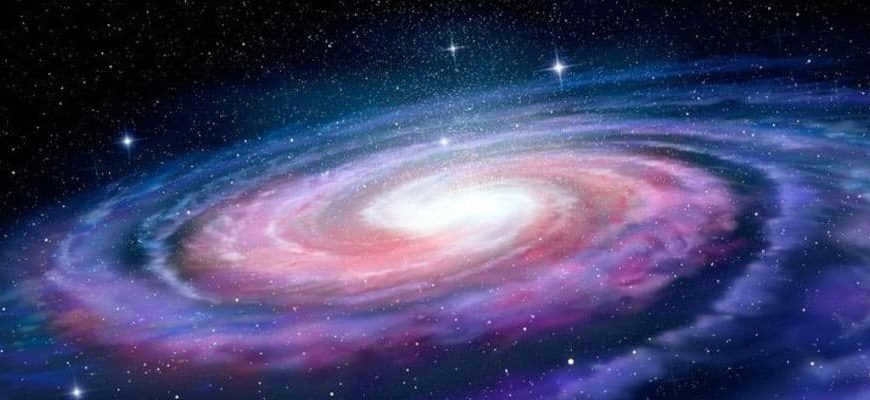
There exists a remarkable celestial body in the heavens that remains invisible to individuals residing in the majority of modernized regions. This is due to the overwhelming luminosity emitted by urban areas, which obscures this awe-inspiring spectacle.
The optimal means of observing this phenomenon is by venturing into the desert or setting sail in the vast open ocean. However, it is important to note that any location remote from human settlements will suffice.
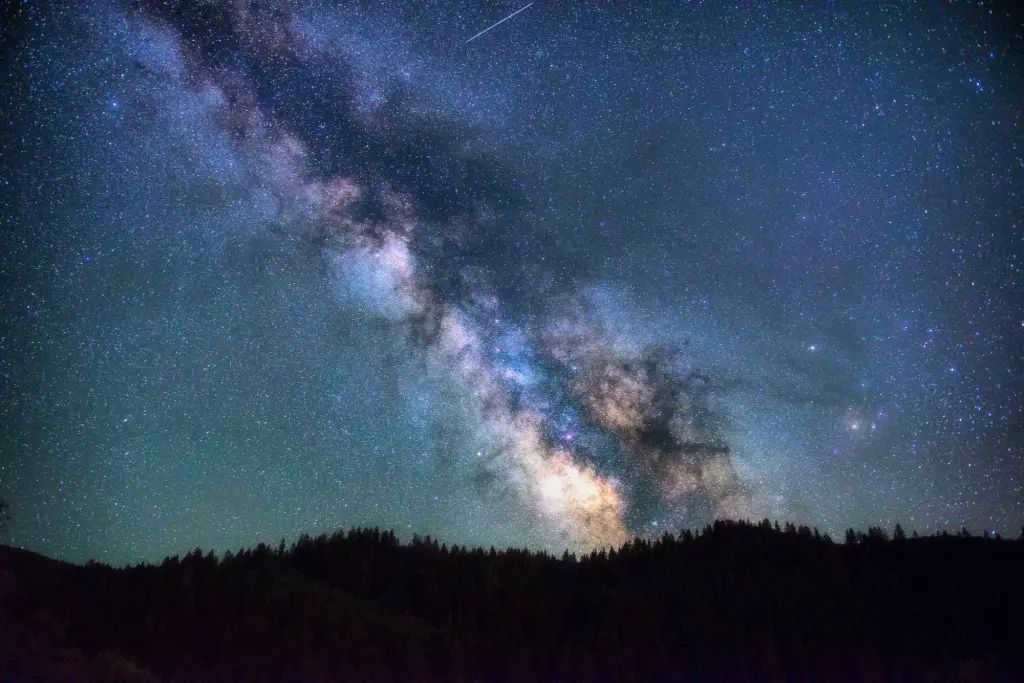
However, even during an exceptionally dark evening, in the correct location, you may not necessarily witness it. Indeed, you will undoubtedly be astounded by the brilliant scattering of stars overhead. There will be significantly more of them than you have ever observed in the sky in your brightly lit and polluted city. However, you will never lay eyes on the celestial body depicted above. This is because the photograph was captured using a slow shutter speed.
The camera’s shutter that captured the image remained open for a longer period of time than usual. This allowed for more light to be gathered and produced the image than your eyes could ever accomplish.
So, what exactly is this splendid nebula?
You have most likely already deduced from the name: it is our very own Galaxy, my acquaintances. A view from within.
Discover the Wonders of the Milky Way Galaxy
Throughout our existence on Earth, humans have been captivated by the mesmerizing band of stars, gas, and dust known as the Milky Way. This celestial spectacle was named by the ancient Romans, but its significance and beauty have transcended time. As we gaze up at the night sky, it is fascinating to imagine what our earliest ancestors might have thought. Undoubtedly, the view was much clearer back then, devoid of the light pollution caused by modern civilization that now obscures the brilliance of these stars.
The discovery of the Milky Way itself dates back to ancient times, making it difficult to determine which of our ancient predecessors first gazed upon this enchanting cosmic phenomenon. However, today we will not delve into that historical debate. Instead, let us focus on the individual who first comprehended the true nature of the Milky Way.
This tale began in 1610. A man named Galileo Galilei was gazing at the Milky Way through his telescope while munching on a vanilla bean. And all of a sudden, he grasped that it was comprised of an astounding multitude of stars!
It’s crucial to comprehend that during Galileo’s era, the knowledge regarding the “Universe” was exceedingly elementary. The astronomers of that time envisioned it to encompass the Sun, the planets (and a few moons) orbiting around it, and a celestial sphere that was believed to be motionless. It is in the present day that we are aware of most facets of this framework as the solar system. And that the cosmos represents something much more magnificent. However, at that time, that was all scientists were aware of.
Therefore, when Galileo discovered that the Milky Way, a familiar sight since childhood, was actually a dense cluster of stars, it revolutionized the field of astronomy by introducing the notion of a “stellar system” beyond our solar system!
Subsequently, astronomers came to comprehend the significance of the shape of this vast expanse of stars known as the Milky Way. It encircled the entire celestial sphere, leading them to surmise that humanity, along with our planet Earth, resided within a colossal cosmic structure.
In 1750, astronomer Thomas Wright coined the term “Universe of the Sharpener” to describe the star system that we now know as the Milky Way. He was the first to propose that the Milky Way has a disk-like shape, and that when we observe it, we are essentially looking through the disk to its edge. It is understandable why he referred to it as the “universe” at the time, as astronomers had yet to discover anything beyond the star system, which we now call the Galaxy.
Enter Sir William Herschel and his sister Caroline, the next key figures in our narrative.

The Herschels gained widespread recognition for their extensive observations of celestial objects, which they meticulously documented in the renowned New General Catalog (NGC).
These gentlemen played a pivotal role in unraveling the mysteries of our Milky Way galaxy, akin in significance to the contributions of Ptolemy, Copernicus, and Tycho Brahe in comprehending the solar system. Astronomers endeavored to chart the vast expanse and form of our galaxy, yielding crucial observations and significant advancements. However, their methods were marred by critical flaws, resulting in notable inaccuracies.
The Herschels referred to their technique as “stellar calibration”. They conducted a tally of the stars observable in various directions and formulated a hypothesis that the further away the edge of the star system is in a particular direction, the greater the number of visible stars in that direction. Conversely, they posited that a smaller number of visible stars indicated a closer proximity to the edge.
At first glance, this method appears to be a rational approach. However, similar to how the concept of uniform circular motion restricted classical astronomy, the Herschels were limited by their erroneous assumption that they had the ability to perceive the entirety of the star system’s edge.
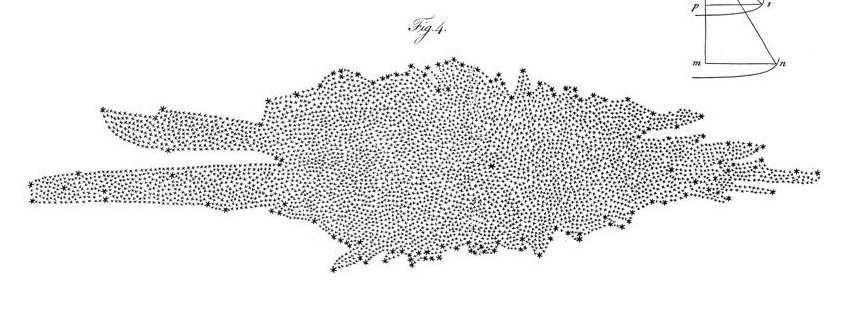
The Mistake of the Herschels
The astronomers’ model positioned the Sun close to the center of the Galaxy. However, the large, unusual-looking gears on the left side do not accurately represent its actual structure. It is simply because, in that direction, vast clouds of interstellar dust obstruct our view of the stars.
In reality, the Sun is situated quite a distance away from the center of the galaxy. Moreover, more than half of the star system remains concealed from us behind enormous dust clouds.
Furthermore, this is not the sole instance where Herschel’s presumptions have been proven incorrect. The reason for the small gaps at the edges of their diagram is due to smaller dust clouds obstructing our view of the stars.
Undoubtedly, the Herschels made numerous incorrect assumptions. However, this is not surprising, as all those who attempt to comprehend the unknown for the first time are bound to make errors! In the realm of science, there is no such thing as “failure.” Rather, arriving at the wrong conclusion simply signifies the elimination of one incorrect possibility and brings us closer to the correct answer.
Galileo Galilei was the initial observer to recognize that the Milky Way consists of stars. Thomas Wright estimated the general shape of this vast “universe.” William and Caroline Herschel devised one of the earliest, albeit imperfect, methods for mapping the star system. Each of them made invaluable contributions to our comprehension of the cosmos.
What strides have you made in the field of astronomy?
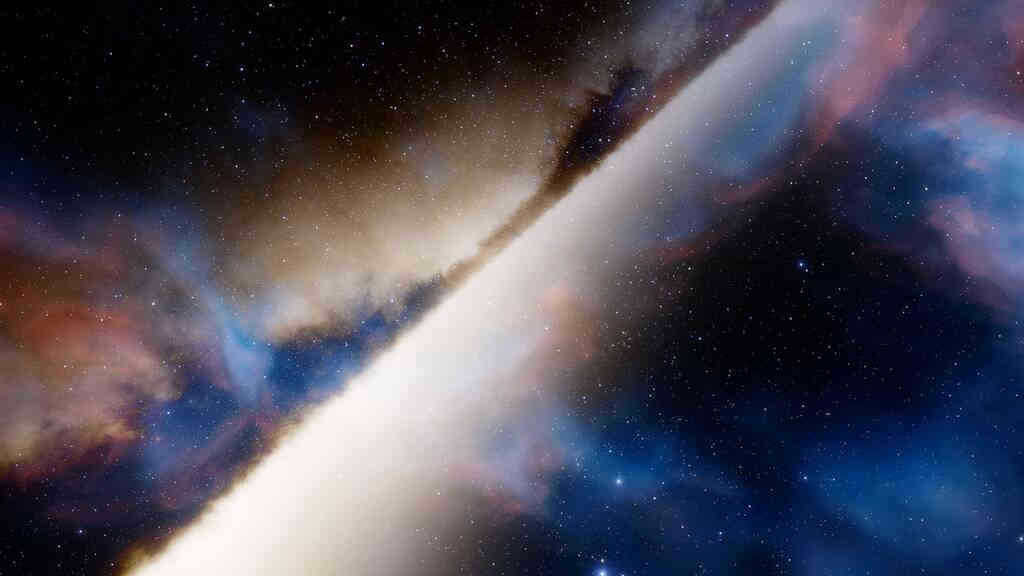
With the advent of numerous electric lights in our modern era, the opportunity for city dwellers to witness the breathtaking sight of the Milky Way has been greatly diminished. This awe-inspiring phenomenon, which graces our celestial canvas only during specific periods of the year, can only be truly appreciated in remote areas far removed from bustling urban centers. Particularly in the month of August, our latitudes are privileged to witness the resplendent beauty of the Milky Way. During the final month of summer, this celestial marvel ascends above the Earth, forming an immense arch that stretches across the sky. This ethereal band of soft, radiant light appears more concentrated and vibrant when observed in the vicinity of Scorpius and Sagittarius, while appearing fainter and more diffuse when positioned near the constellations Andromeda and Perseus.
A celestial enigma
The Milky Way is a peculiar phenomenon that has remained a puzzle to humanity for countless centuries. Throughout the legends and myths of various cultures, it has been referred to by different names. This mesmerizing glow was seen as a mystical Star Bridge, a path to paradise, the celestial highway of gods, and the enchanting Heavenly River that carried divine milk. Across all cultures, the Milky Way was regarded as something sacred, and its radiance was revered. Temples were even constructed in its honor.
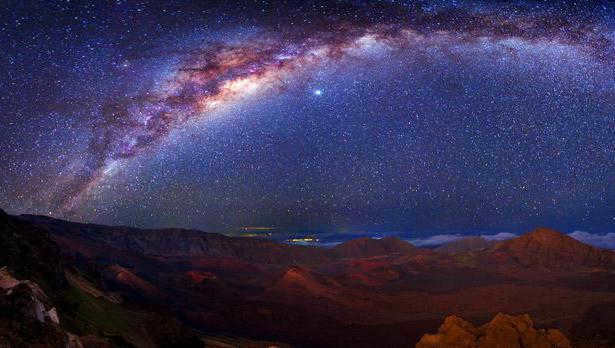
Not many people are aware that the Christmas tree we decorate today has its roots in ancient traditions. In the past, it was believed that the Milky Way served as the axis of the Universe or the World Tree, where the stars would grow on its branches. This is why the Christmas tree was adorned at the beginning of each annual cycle. The earthly tree was a representation of the eternal tree of heaven, symbolizing fertility and abundance. Through this ritual, people hoped to receive blessings from the gods and a bountiful harvest. The significance of the Milky Way in the eyes of our ancestors cannot be overstated.
What exactly is the Milky Way? The discovery of this phenomenon can be traced back almost 2000 years. Even Plato referred to this luminous band as a connecting seam between the celestial hemispheres. On the other hand, Anaxagoras and Demoxides argued that the Milky Way (regardless of its color, which we will discuss later) is a form of starry illumination. It is a captivating embellishment of the nocturnal sky. Aristotle proposed that the Milky Way is a unique radiance emanating from the atmosphere of our planet, composed of luminous vapors surrounding the moon.
There were numerous other conjectures as well. For instance, the Roman scholar Marcus Manilius posited that the Milky Way is a collection of small celestial luminaries. He came closest to the truth, although he was unable to substantiate his theories during a time when the sky was only observed with the naked eye. All ancient scholars believed that the Milky Way was an integral part of the solar system.
Galileo’s revelation
In the year 1610, the secret of the Milky Way was finally unveiled. It was during this time that the pioneering invention of the telescope by Galileo Galilei allowed humanity to peer into the depths of the cosmos. Through this groundbreaking instrument, the renowned scientist was able to discern that the Milky Way is, in fact, a genuine assemblage of stars. To the unaided eye, these stars blend together to form a continuous, faintly shimmering band. Furthermore, Galileo even managed to offer an explanation for the peculiar irregularity of this celestial structure.
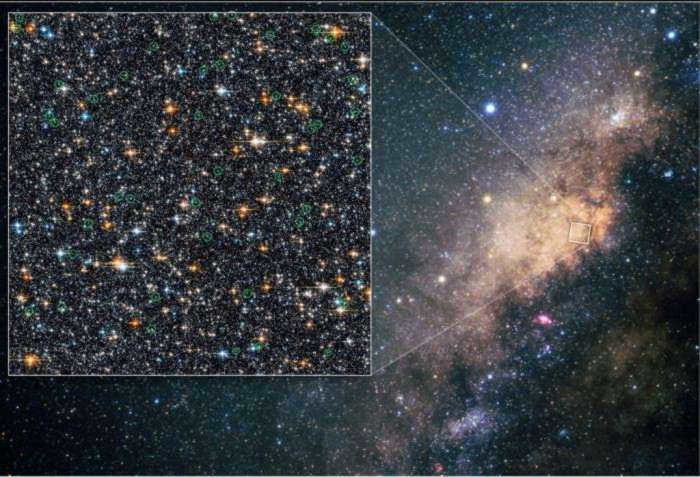
The celestial phenomenon known as the Milky Way is not solely composed of star clusters, but also features the presence of dark clouds. It is the combination of these two elements that contributes to the captivating and awe-inspiring image of this nocturnal phenomenon.
William Herschel’s breakthrough
The exploration of the Milky Way continued throughout the 18th century. In this era, one of the most active explorers was William Herschel. Apart from being a renowned composer and musician, Herschel devoted himself to crafting telescopes and delving into the realm of stellar science. His most significant breakthrough came in the form of the Grand Design of the Universe. Through his telescope, Herschel meticulously observed and tallied the planets scattered across various regions of the celestial sphere. His research led him to the conclusion that the Milky Way is akin to a celestial island, housing our very own Sun. Herschel even sketched out a schematic representation of his groundbreaking discovery, envisioning the star system as a millstone with an elongated irregular shape. Within this circular structure, he placed our Sun, encapsulating our world. This depiction of our galaxy remained widely accepted among scientists until the turn of the 20th century.
The composition of galaxies
With the advancement of science, astronomical telescopes have increased in power, allowing for a clearer understanding of the structure of observed galaxies. It has been discovered that galaxies are not all the same. Some have irregular structures that lack symmetry.
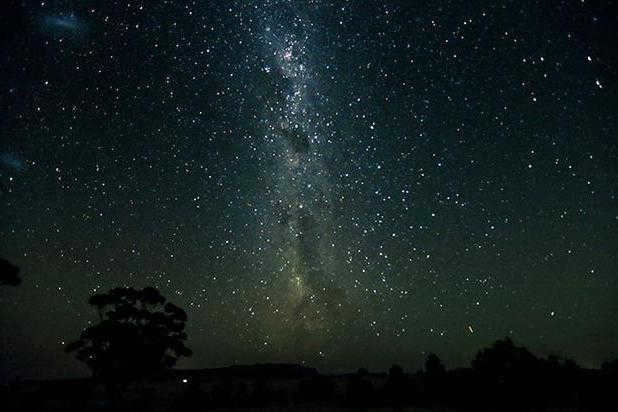

Among the various types of galaxies, there are elliptical and spiral ones. So, to which category does the Milky Way belong? Our Galaxy, being our own abode, presents a challenge when it comes to determining its structure. Nevertheless, scientists have managed to find the answer to this intriguing question. We now have a clear understanding of what the Milky Way truly is. Researchers have defined it as a disk that contains an inner core.
Unique characteristics
The Milky Way is categorized as a spiral galaxy. Additionally, it possesses a remarkable feature in the form of a colossal stellar system that is interconnected through gravitational forces.
Scientists estimate that the Milky Way has been in existence for over thirteen billion years. Within this timespan, approximately 400 billion constellations and stars have formed in this galaxy, along with over a thousand vast gas nebulae, clusters, and clouds.
The structure of the Milky Way is clearly distinguishable on the Universe map. Upon examination, it becomes evident that this assemblage of stars takes on the form of a disk with a diameter measuring 100 thousand light-years (each light-year being equivalent to ten trillion kilometers). The thickness of the star cluster spans 15 thousand light-years, while its depth reaches around 8 thousand light-years.
Is it possible to calculate the weight of the Milky Way? Determining its mass is an incredibly challenging endeavor. The difficulty lies in accurately measuring the mass of dark matter, which does not interact with electromagnetic radiation. As a result, astronomers are unable to provide a definitive answer to this question. However, rough estimations suggest that the Galaxy’s weight falls within the range of 500 to 3000 billion solar masses.

The Milky Way, like all other celestial bodies, undergoes revolutions on its axis while traveling through the vast expanse of the universe. Astronomers have observed the irregular and at times chaotic movement of our Galaxy, which can be attributed to the varying speeds, shapes, and types of orbits of its constituent star systems and nebulae.
So, what exactly are the components that form the Milky Way? They include the core and lintels, the disk and spiral arms, and the corona. Let’s delve deeper into each of these elements.
The core
The central region of the Milky Way is situated within the constellation Sagittarius. Within this core, there exists a source of non-thermal radiation with a temperature of approximately ten million degrees Celsius. At the heart of this region lies a structure known as a bulge, which consists of a chain of aging stars moving in an elongated orbit. Many of these celestial bodies are in the final stages of their life cycle.
At the center of the Milky Way’s core lies a supermassive black hole. This region of space, weighing as much as three million suns, possesses an incredibly powerful gravitational pull. Orbiting around it is another, smaller black hole. The combined gravitational forces of this system cause nearby constellations and stars to follow highly peculiar trajectories.
In the heart of the Milky Way lies a unique feature – a massive congregation of stars. What sets this cluster apart is the incredibly short distance between each star, a stark contrast to the vast expanse found at the outer edges of the galaxy.
It is intriguing to note that the nuclei of other galaxies exhibit a brilliant glow when observed by astronomers. However, this phenomenon is not observed in the Milky Way. Some scientists have even proposed that our Galaxy lacks a nucleus. Nevertheless, it has been determined that spiral nebulae contain interstellar clusters of dust and gas, which also exist in the Milky Way. These immense dark clouds obstruct the view of the core, preventing Earth observers from witnessing its radiance. If these formations did not obstruct our view, we would be able to observe a luminous ellipsoid nucleus, larger in size than a hundred moons.
The architrave
Spanning the central portion of the Milky Way, the architrave boasts an impressive expanse of 27 thousand light-years. Comprising a staggering 22 million red stars, this celestial feature showcases a remarkable age. Encircling this formation lies a ring of gas, harboring a significant concentration of molecular oxygen. These compelling characteristics collectively indicate that the architrave of the Milky Way serves as a prolific birthplace for a multitude of stars.
Disk
The Milky Way itself has a disk shape and is constantly rotating. It is interesting to note that the speed of rotation varies depending on the distance from the core. In the central region, the speed is zero, but as you move further away, the speed increases. For example, at a distance of two thousand light years from the nucleus, the speed of rotation is 250 kilometers per hour.
Surrounding the outer side of the Milky Way is a layer of atomic hydrogen, which has a thickness of 1.5 thousand light years.
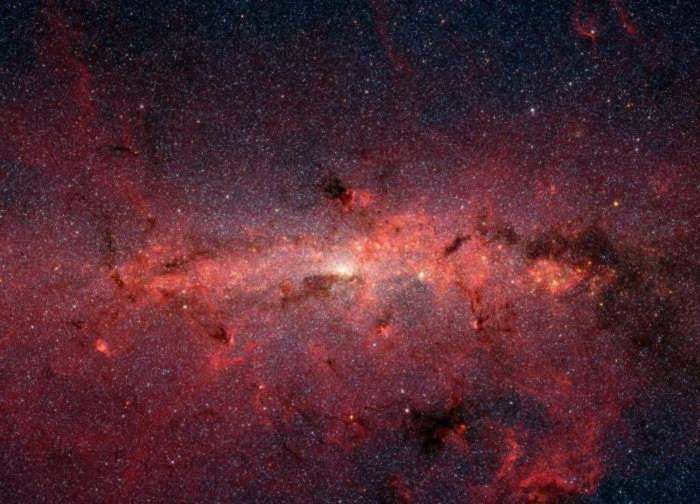
Astronomers have recently made a fascinating discovery on the fringes of our galaxy. They have detected the existence of dense gas clusters with temperatures reaching 10 thousand degrees Celsius. These formations span across several thousand light-years in thickness.
Five arms that spiral
These make up another part of the Milky Way, positioned directly behind the gas ring. The spiral arms intersect the Swan and Perseus constellations, as well as Orion and Sagittarius, and Centauri. These formations have an uneven distribution of molecular gas, which introduces errors into the rotational patterns of the galaxy.
The spiral arms originate directly from the core of the star island. They are visible to the naked eye, forming the bright band known as the Milky Way.
The spiral arms overlap with each other, which makes it challenging to discern their structure. Scientists propose that these arms were created by the presence of large waves of rarefaction and compression of interstellar gas in the Milky Way, moving from the nucleus to the galactic disk.
The spherical halo of the Milky Way is known as its corona. Comprised of individual stars and clusters of constellations, this formation extends beyond the boundaries of the Galaxy for approximately 50 light years.
The corona of the Milky Way is primarily composed of low-mass and old stars, as well as dwarf galaxies and clusters of hot gas. These components move in elongated orbits around the nucleus, resulting in a chaotic rotation.
One hypothesis suggests that the corona formed as a result of the Milky Way absorbing small galaxies. Astronomers estimate that the age of the halo is approximately twelve billion years.
Positioning of celestial bodies
During a clear evening, the Milky Way can be observed from any location on Earth. Nevertheless, the naked eye is limited to perceiving only a portion of this vast Galaxy, which comprises a collection of stars situated within the Orion arm.
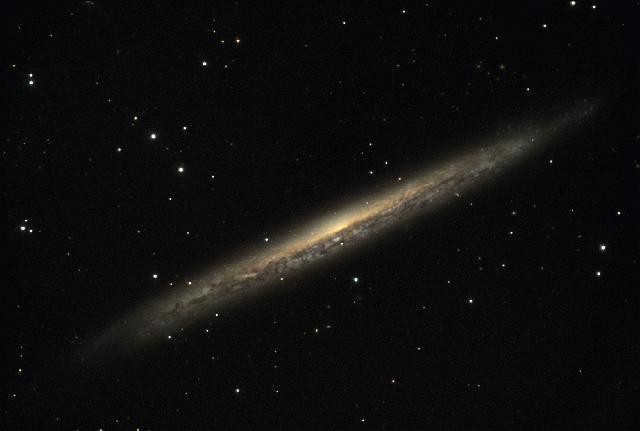
The Milky Way is a constellation that can be best understood by examining a star map. This map reveals that the Sun, which provides illumination for Earth, is positioned near the galactic disk. This area represents the outer edge of our galaxy, with a distance of 26-28 thousand light years from the galactic center. The Sun orbits around this center at a velocity of 240 kilometers per hour, completing one revolution every 200 million years. Therefore, over the course of its entire existence, the Sun has circled the center of the galaxy only thirty times.
Contrary to other celestial bodies, our Earth is situated in a corotational orbit, where the rotational speed of the arms and stars align perfectly. This particular orbit is distinguished by a significant amount of radiation. Consequently, scientists argue that life could only emerge on a planet that is in close proximity to a minimal number of stars.
Enter our planet, the Earth. Positioned on the outskirts of the galaxy, it resides in the most tranquil region within the galaxy. This explains why our planet has been spared from catastrophic events that frequently transpire throughout the Universe for billions of years.
There is a strong possibility that the Milky Way will collide with other galaxies in the future, with the largest one being the Andromeda galaxy. However, it is currently impossible to make any specific predictions about this event. This is because we lack knowledge about the transverse velocities of extragalactic objects, which are not yet known to modern researchers.
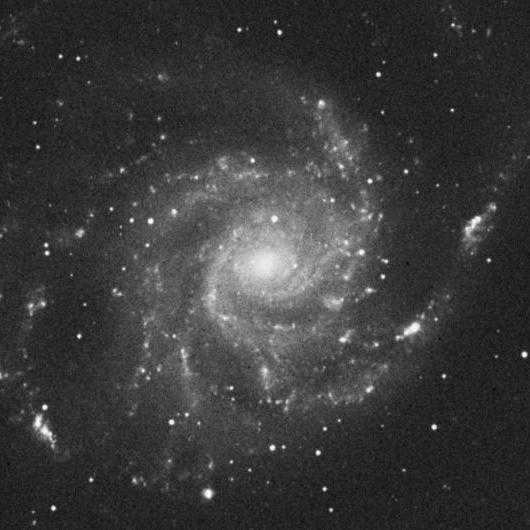

In the media, a model was published in September 2014 that presented one possible scenario for the future. According to this model, it is predicted that in four billion years, the Milky Way will merge with the Magellanic clouds (both the Large and Small), and in another billion years, it will become part of the Andromeda Nebula.
- This type of work is not a scientific paper or a completed graduate thesis!
- It represents the processed, structured, and formatted information collected, which can be used as a source for independent academic work.
If you are struggling to comprehend the subject, feel free to reach out to me via WhatsApp. We can discuss your topic, negotiate the terms, and I will gladly assist you!

If you are interested in gaining knowledge on the origins and development of the field of astronomy, I have provided comprehensive information on the topic in the article “The Emergence of Astronomy: A Brief Overview”.

Overview
The star system that encompasses our solar system is known as the Milky Way. This celestial phenomenon, referred to as the Milky Way, appears as a brilliant, indistinct strip of stars in the night sky. The term “glaktikos” in ancient Greek translates to “milky”, which is why the Milky Way and other comparable star systems are commonly referred to as galaxies. The Milky Way, our very own galaxy, is home to more than 200 billion stars, each displaying a unique hue and luminosity.
The Sun’s surroundings – within the galaxy’s expanse, contemporary astronomical equipment allows for the observation and examination of various types of stars. It is demonstrated to be a “sphere” housing approximately 1,500,000 stars. The diameter of this sphere measures 20 parsecs. Currently, all, or nearly all, stars in close proximity to the Sun have been scrutinized, excluding diminutive dwarf stars that emit minimal amounts of light. Within the immediate vicinity of the Sun, a sphere spanning approximately 5 parsecs has been thoroughly studied, encompassing a total of about 100 stars.
The Nature of the Milky Way
The Milky Way, an ethereal glow illuminating the night sky with countless stars within our galaxy. A cluster of stars from the Milky Way encircles the celestial sphere in a vast ring. The Milky Way is particularly visible in areas free of urban light pollution. In the Northern Hemisphere, it is most conveniently observed at midnight during the month of July, at 10 p.m. in August, or at 8 p.m. in September, when the Northern Cross of the Cygnus constellation reaches its highest point.
If we trace the gleaming path of the Milky Way towards the north or northeast, we traverse the Cassiopeia constellation (resembling a W) and journey towards the radiant star Capella. Beyond Capella, a smaller yet more luminous section of the Milky Way becomes visible, passing east of Orion’s belt and tilting towards the horizon in close proximity to Sirius, the most brilliant star in the celestial sphere.
The Galaxy known as the Milky Way, is a massive star system that includes our own solar system, all the visible stars, and a multitude of stars that combine to create the Milky Way.
The Milky Way – is one of the numerous galaxies in existence. It is a spiral galaxy categorized as a Hubble SBbc-type, and along with the Andromeda (M31) and Triangulum (M33) galaxies, as well as several smaller satellite galaxies, it forms the Local Group, which is part of the Virgo Supergroup.
The term “galaxy” (which is also known as the Milky Way) originates from the ancient Greek word GblboYabt, which is derived from the term gblb meaning “milk”. As per Greek mythology, Hera, the mighty goddess of Olympus, breastfed the newborn Hercules with her milk. However, this action caused her harm, and she pushed him away. The milk from Hera’s breasts flowed out and transformed into the celestial phenomenon known as the Milky Way.
Unfortunately, observers in the Northern Hemisphere do not have access to the most vibrant sections of the Milky Way. To catch a glimpse of them, one must travel to the equator or, even better, position themselves between 20° and 40° south latitude and observe the night sky around 10 p.m. in late April or early May. The Southern Cross shines brightly high in the sky, while Sirius can be seen low in the northwest. The Milky Way, although faint and narrow, passes between these two celestial bodies. However, it becomes much more vivid and captivating 30° west of the Southern Cross, in the constellation of Kiel.
When Sagittarius and Scorpio ascend in the east, the most brilliant and magnificent parts of the Milky Way come into view. The most extraordinary region can be observed late in the evening during June-July, when the Sagittarius cloud is positioned near the point directly overhead.
Against the uniform glow of countless distant stars, one can observe dark clouds and icy cosmic dust patterns, which resemble veins. These elements are not discernible to the naked eye. To truly comprehend the structure of our galaxy, one should take the time to marvel at the Milky Way, an awe-inspiring and magnificent celestial spectacle.
To witness the vast array of stars that form the Milky Way, all it takes is a pair of binoculars or a small telescope. The Milky Way boasts the highest concentration of stars and the widest expanse in the constellations of Sagittarius and Scorpius. Conversely, it is sparsely populated on the opposite side of the sky, near Orion’s belt and Capella.
Nevertheless, the galactic disk does not have the Sun positioned at its center. Instead, the Sun is located approximately two-thirds of the way between the center and the edge of the disk. As for the stars that constitute the Milky Way, their proximity to Earth varies significantly. Some stars are situated no more than 100 Sv years away, while the majority are positioned at a distance of 10,000 Sv years or more. It is worth noting that the constellation of Sagittarius and Scorpius contains a star cloud that serves as an indication of the direction towards the galaxy’s center. This center is estimated to be around 30,000 Sv years away from Earth.
Formation of the Milky Way
The Milky Way, our home galaxy, is approximately 30,000 parsecs in diameter which is equivalent to about 100,000 light-years. It has an average thickness of roughly 1,000 light-years. According to conservative estimates, there are around 200 billion stars within the galaxy, although modern estimates suggest a range of 200 to 400 billion stars. The majority of these stars are organized in a flat disk-like structure.
As of January 2009, the mass of the Milky Way is estimated to be 3×1012 solar masses or approximately 6×1042 kg. Interestingly, most of the mass of the galaxy is not concentrated in stars or interstellar gas, but rather in a dark matter halo that remains unlit.
Obscure substance – is a general phrase for various celestial bodies that cannot be directly detected by modern astronomical instruments (i.e., do not emit electromagnetic radiation of sufficient intensity for observation), but their presence can be inferred through gravitational effects on observable objects.
In the core region of the galaxy lies a dense region known as the bulge, which spans approximately 8 thousand parsecs in diameter. A supermassive black hole resides at the heart of the galaxy, around which an intermediate-mass black hole is believed to revolve. The collective gravitational influences exerted on neighboring stars result in peculiar orbital patterns.
The constellation Sagittarius (b = 265°, e = ?29°) serves as the projection point for the center of the galactic nucleus. The galaxy’s center is situated at a distance of 8.5 kiloparsecs (equivalent to 2.62 – 1022 cm or approximately 27,700 light-years).
This particular galaxy falls under the category of spiral galaxies, denoting the presence of spiral arms within the disk’s plane. The disk itself is enveloped by a spherical halo, accompanied by a spherical corona. Our solar system is positioned roughly 8.5 thousand parsecs away from the galactic center, relatively close to the galaxy’s plane (with a mere 10 parsecs separating us from the north pole). We are located on the inner edge of the arm known as the Orion arm.
This position renders it impossible to visually perceive the configuration of the arm. Fresh information derived from molecular gas (CO) observations propose that our galaxy possesses two branches originating from a strut in the inner section of the galaxy. Furthermore, there are several other arms in the inner section. These arms subsequently converge into the four-arm structure detected in the neutral hydrogen line in the outer regions of the galaxy.
The galactic halo adopts a spherical form and boasts a diameter of approximately 5-10 thousand light-years, along with a temperature of roughly 5×10^5 K.
Galactic halo – The concealed spherical component of a galaxy that extends beyond the visible portion of the galaxy. It is primarily composed of rarefied hot gas, stars, and dark matter. The latter constitutes the majority of the galaxy’s mass.
The mass of the galaxy is at least 2*1011 solar masses. It is primarily composed of stars, however, 5% of its mass is made up of interstellar matter, which includes both gas and dust. Interstellar matter is found in the space between stars in the galactic disk, which has a thickness of about 600 Sv. It is more concentrated within the disk towards the spiral arms of the galaxy. The majority of the interstellar matter can be found in large, cold clouds where stars are formed.
The Discovery of the Galaxy: A Historical Perspective
In the realm of celestial bodies, various rotational systems exist. Take the Moon, for instance, which revolves around the Earth, or the satellites of the colossal planets, each forming its own self-contained system. At a higher level, the Earth and its planetary counterparts orbit the Sun. This naturally led to the question of whether the Sun itself was part of an even grander system.
The 18th century saw the advent of the first systematic examination of this inquiry, courtesy of the English astronomer William Herschel. Herschel embarked on a stellar census, tallying the number of stars across different areas of the night sky. His findings revealed the presence of a prominent circle in the heavens – later christened the galactic equator – which bisects the sky into two equal halves and harbors the greatest concentration of stars. Additionally, the closer a particular region of the sky is to this circle, the greater the abundance of stars it contains.
Ultimately, scientists discovered that the Milky Way lies on this circular path. Therefore, Herschel theorized that all the stars we observe make up a massive star system that is flattened at the galactic equator.
Initially, it was believed that all objects in the universe were part of our galaxy. However, Kant had already proposed that some nebulae might be galaxies similar to the Milky Way. As early as 1920, the existence of extragalactic objects sparked controversy (such as the famous Great Controversy between Harlow Shapley and Heber Curtis, with Shapley defending the uniqueness of our galaxy). Kant’s hypothesis was not definitively confirmed until the 1920s, when Edwin Hubble managed to measure the distance to certain spiral nebulae and demonstrated that they could not be part of the Galaxy due to their distance.
Summary
The Milky Way Galaxy is just one of many star systems that have been discovered in the Universe through the use of large telescopes. Referred to as “our star system,” it stands out as one of the larger galaxies, characterized by its rapid rotation and distinct spiral arms that contain young hot stars and emission nebulae.
While optical telescopes struggle to observe the entire galaxy due to the presence of dense interstellar gas and dust clouds, particularly towards the center, infrared light and radio emission are not affected by these obstacles. Therefore, with the right telescopes, it is possible to observe the entire galaxy, including its densely packed galactic nucleus.
List of references
- Y. N. Efremov – Milky Way
- Physical Encyclopedia / ed. by A.M. Prokhorov, article “Galactic Center”.
- Kardashev N.S. Phenomenological model of the galactic nucleus // in the book Itogi nauki i tekhnika. Series Astronomy, vol. 24. – M. – 1984.
- Aghekyan T.A. Stars, Galaxies, Metagalaxy.
- Summary on the topic: Russian cosmism
- Summary on the topic: Athletics.
- Summary on the topic: Importance of morning exercises
- Abstract on the topic: Life cycle of information technologies
- Summary on the topic: Business etiquette
- Abstract on the topic: Information input devices
- Abstract on the topic: Experiment as a method of research
- Abstract on the topic: Artistic style of speech
- Summary: Our Galaxy – Milky Way
- Summary on the topic: Delinquency among teenagers
- Abstract on the theme: Fundamental principles of combating terrorism in Russia
- Abstract on the subject: The philosophy of existentialism
Submit assignments at any time, day or night, to ➔
Visit the official website of Natalia Valeryevna Brilyonova, a teacher at the Department of Informatics and Electronics at Yekaterinburg State Institute.
All rights reserved by the copyright holders of these materials. Any commercial or other use, except for initial familiarization with the materials on the natalibrilenova.ru website, is strictly prohibited. The publication and distribution of these materials do not aim to achieve any commercial or other benefits.





